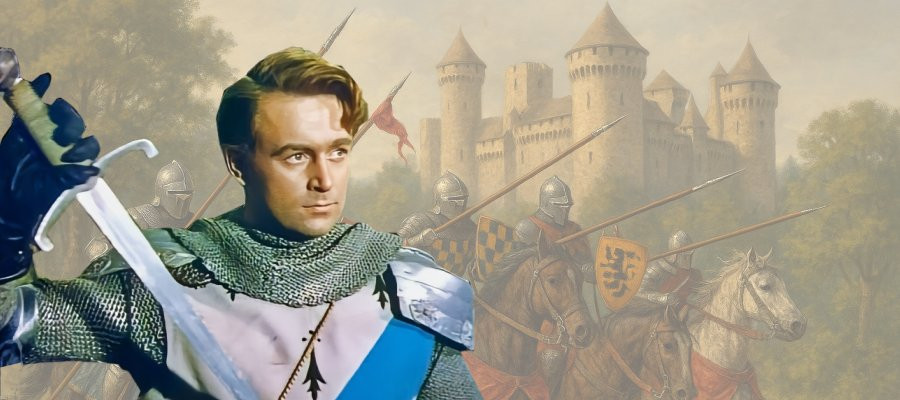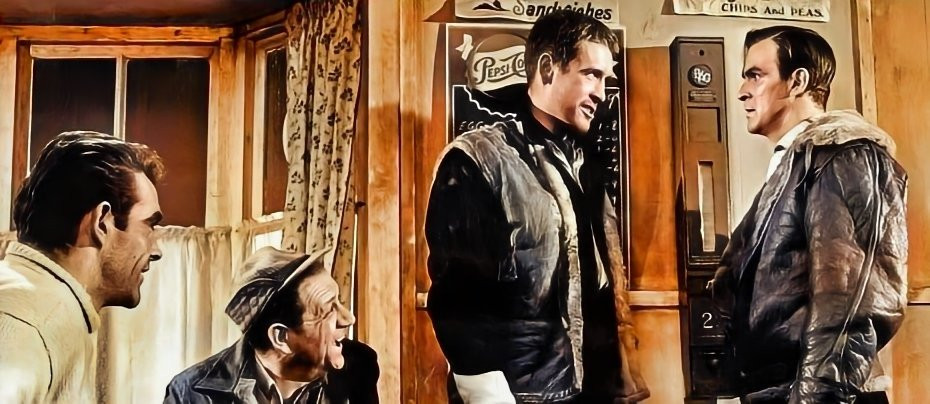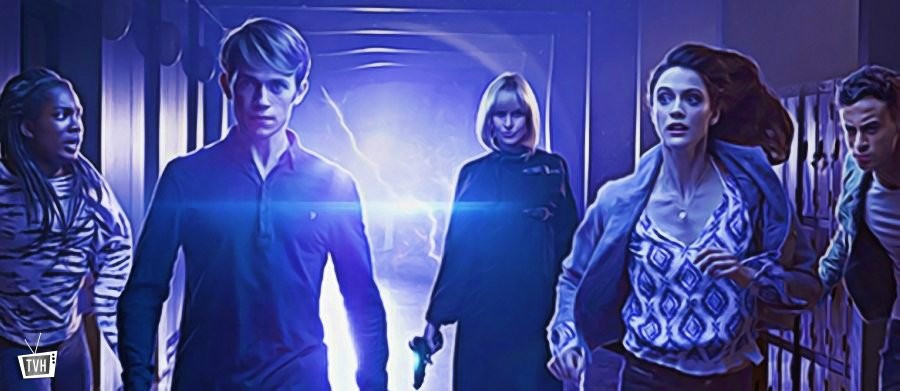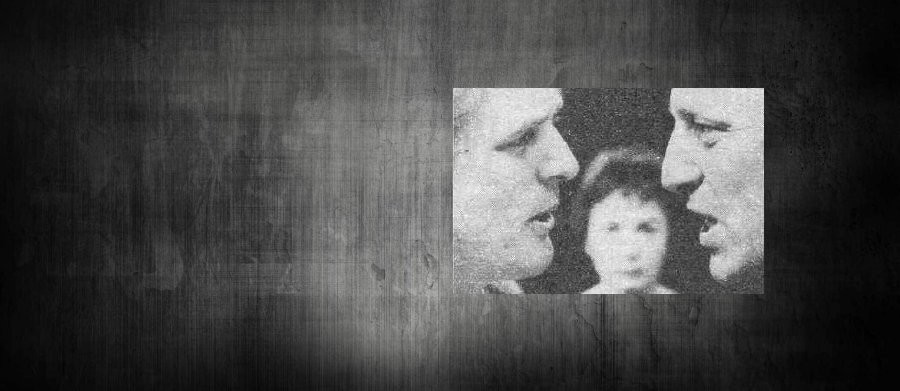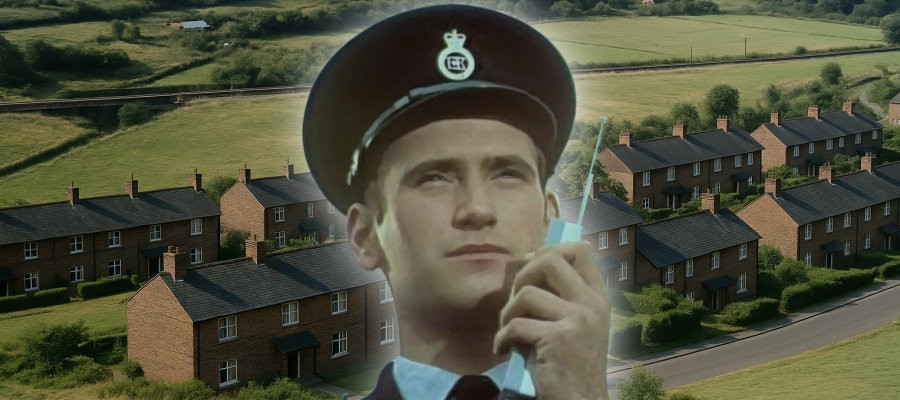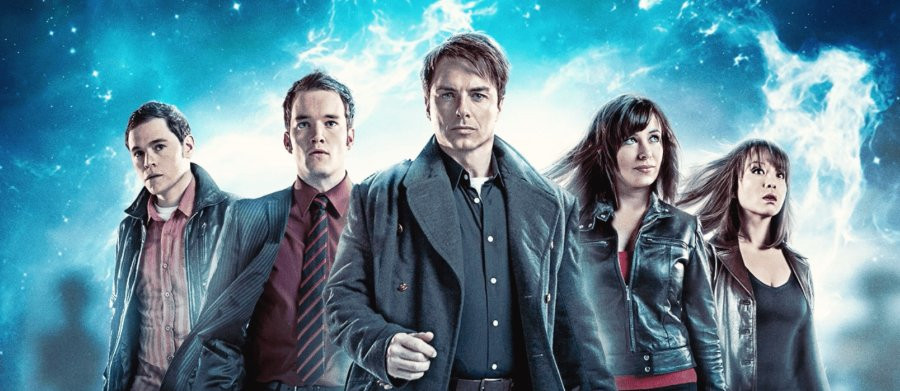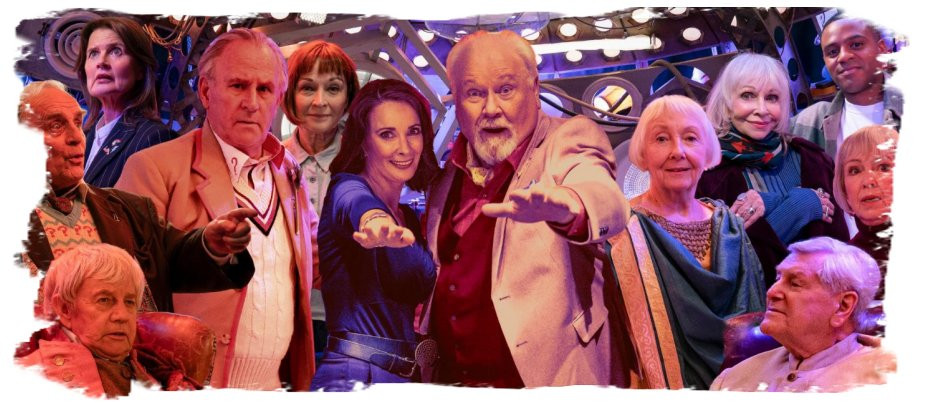The Rescue
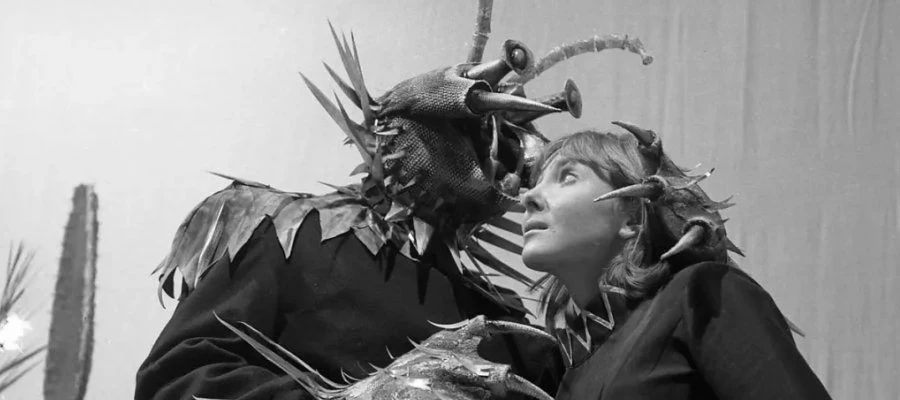
Review by Daniel Tessier
Early into its second season, Doctor Who experienced the first of its many, many changes in its main cast. Carole Ann Ford had decided to leave the programme after its first year of filming, her character Susan remaining behind at the end of the second serial of the season, The Dalek Invasion of Earth. Producer Verity Lambert then had to come up with a replacement for the young character role, accompanying the adults in their voyages through time and space.
The original plan was to introduce the new character in The Dalek Invasion, having her then join the TARDIS as Susan left. Originally this was to be Saida (or Saeda), a young Anglo-Indian girl who would stow away on the TARDIS at the serial’s conclusion. Lambert had even booked an actress for the part, fourteen-year-old Pamela Franklin, best known now for her role as Sandy in The Prime of Miss Jean Brodie in 1969 and numerous horror films in the seventies. A change in direction turned Saida into Jenny, who was then reworked into an older, less significant character, eventually played by thirty-year-old Ann Davies.
Lambert gave the job of creating and introducing Susan’s replacement to David Whittaker, who had just ended his role as script editor for the programme. Whittaker wrote a simple, two-part story as an introductory vehicle for the new companion. After playing with names such as Valerie, Millie, Lukki and Tanni (the latter surviving until the scripting stage, with the draft script titled Doctor Who and Tanni), the character finally named Vicki and introduced in the first serial of 1965, The Rescue.
Vicki is very clearly written to be an ersatz Susan. Rather than an unearthly child of mysterious origin, Vicki is from Earth, indeed England, in the year 2493. Practically this makes little difference; she’s still an unusual combination of an identification figure for younger viewers and an outsider who can comment on the peculiarities of 20th century Britain. We never find out what happened to Susan’s parents, but Vicki is explicitly an orphan, putting her in a similar position of relying on the Doctor as her guardian. She immediately falls into the same sort of relationship, becoming a stand-in granddaughter to the Doctor; the first in a long line of substitute Susan’s who can be relied upon to get into trouble, endure a mild telling off and enjoy the softer side of the Doctor’s personality.
However, I find I like Vicki more than Susan, due to both her writing and the actress who brings her to life. Maureen O’Brien, these days best known as a writer of detective novels (seven between 1989 and 2004, beginning with Close-Up on Death) was a notable young actor when cast in 1964, a founding member of the Everyman Theatre in Liverpool. (O’Brien’s Scouse accent would slip into Vicki’s character occasionally over the course of her time on the programme.) Doctor Who was her first television casting, the beginning of a career that would include The Legend of King Arthur, Casualty, and Jonathan Creek.
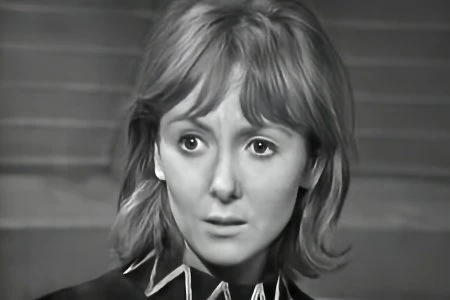
Like Carole Ann Ford as Susan, O’Brien was playing a teenager in spite of being in her early twenties. (Tie-in materials later suggest she is either 14 or 15 in The Rescue, and also give her the surname Pallister, none of which is ever mentioned on screen.) Slim and boyish looking, she was both well-suited to playing a younger character and a fashionable type for a lead in the 1960s. Where she really differs from Susan is her attitude. While Susan could answer back sometimes, Vicki is outspoken, argumentative and witty. She never holds back from berating or mocking the people around her. Even in her first appearance, she knowingly teases Barbara for her age (“That means you must be… about five hundred years old!”) and chastises the Doctor’s hair and dress sense (wisely out of his presence, even though he is amused when he hears it).
While her dialogue is, of course, scripted, her attitude owed just as much to O’Brien’s performance, and, from the sound of it, her character in real life. When the production team insisted she dye her hair black, to become an even more obvious Susan replacement, she refused point blank. “Why don’t you just get Carole Ann Ford?” she asked them, and they backed down.
Given that it exists purely to introduce Vicki, The Rescue has a pretty perfunctory plot. This is perhaps reflected by the especially generic titles used for the serial and its episodes. The Rescue is fairly broad but at least gives you some idea of what goes on in the story; some overseas markets, such as New Zealand, jazzed it up a little as Dr Who and the Rescue or Dr Who to the Rescue, but it’s still quite nondescript. It’s better than the individual episode titles, though: “The Powerful Enemy” and “Desperate Measures,” titles that could be applied to virtually any Doctor Who from start to finish.
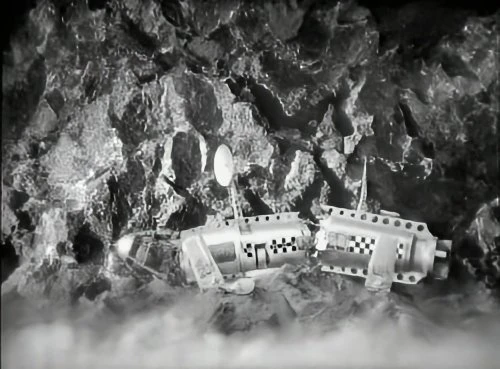
A straightforward story isn’t necessarily a bad thing, however, and The Rescue is a fun little serial, enlivened by some great work from the regulars. It begins on the remains of a crashed spacecraft (some lovely modelwork) sporting a Union Jack on its hull, where Vicki and the injured and immobile Bennett are waiting for the arrival of a rescue ship. The ship crashed on an uncharted planet on the way from Earth to Astra, and they are the only two survivors. They live in fear of Koquillion, a native of this planet, a terrible figure who keeps them in line by threatening to leave them to the mercies of his brutal people.
The Doctor uncharacteristically sleeps through the TARDIS’ materialisation, with Ian and Barbara concerned about him following Susan’s departure. When the Doctor does appear, there’s a great exchange between him and Barbara, reporting on the condition of the ship: “Doctor, the trembling’s stopped.” “Oh, my dear, I’m so glad you’re feeling better.” A nice taste of the increase in humour in the series, which will go much further in the following story The Romans, as Hartnell’s comedy credentials are finally taken advantage of. The Doctor absently calls for Susan before leading the others out of the ship, clearly out of sorts without her. Ian even comments that he’s concerned, noting that the Doctor “isn’t getting any younger.” Little does he know…
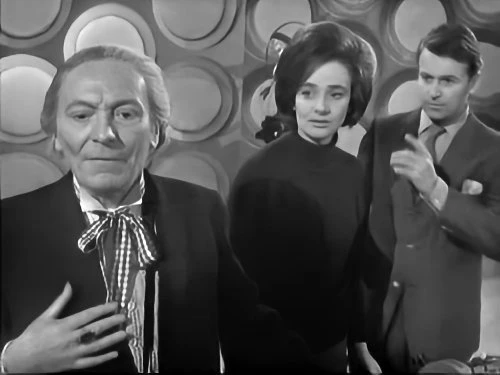
The Doctor realises that they’ve landed on the planet Dido, somewhere that, unusually, he has visited before. He talks about the delightful, peaceful natives and clearly had a great time there, but the planet is a desolate rock now and the people are nowhere to be seen. (Although as the Doctor says there were only about a hundred of them on the whole planet, you’d hardly expect the place to be bustling.)
It isn’t long before the monstrous Koquillion (or, as William Russell insists on calling him, “cockylickin,”) tries to take out Ian and the Doctor, with Barbara escaping to the crashed ship. Ian might be spouting ridiculous hyperbole when he says he’d rather face the Daleks than Koquillion, but the monster is a wonderful design. Raymond Cusick’s designs once again make all the difference, not only his spaceships but the disturbingly elaborate, insectoid face of the monster, reportedly based on a close-up photo of a fly’s head.
Meanwhile, Barbara gets to know Vicki, although she isn’t in her good graces to begin with as she almost immediately murders Vicki’s pet monster, Sandy the sand beast, with a flair gun. The only other living thing we’ve seen on the planet so far, and Barbara mows it down without a second though because it looks scary. The explosive effect was mis-timed and left Jacqueline Hill shocked and singed, and you almost feel she deserves it. What a bully.

The increasingly sinister Bennett seems surprisingly unhappy to see another human being. Australian actor Ray Barratt gives an aggressive but believable performance as the beleaguered spaceman, who explains that when their ship crashed, the Dido natives massacred the survivors, with Bennett alone left alive, but paralysed. (Vicki was spared thanks to being confined to the ship with a fever.) Now Bennett deals with Koquillion in private, negotiating their continued survival.
Now, I don’t want to spoil a sixty-year-old serial for you, but if you haven’t worked it out yet, here’s the shocking truth: Bennett is Koquillion. The Doctor realises it straight away, of course, knowing that the natives would never harm the crashed passengers, and recognising Koquillion’s face as a Didoan ritual mask. Yes, it’s one of those times we can forgive the monster costume for looking a bit unconvincing because it’s really supposed to be a costume all along (a trick that Doctor Who is still pulling in 2025). The Doctor confronts Bennett, pushing him to confess that he killed the other passengers in an explosion, all to cover up his earlier murder of a single crewman.
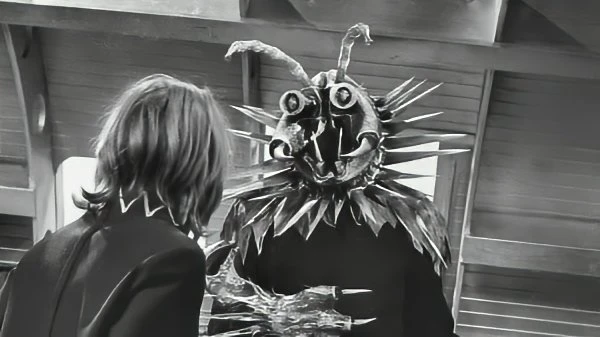
Quite what he had in store for Vicki we fortunately never learn, as two of the supposedly dead Dido people appear from the shadows. Perfectly human in form, white-clad and silent, they simply approach Bennett until he stumbles over a cliff edge in fear. They’re almost ghost-like, at least until the final moments of the serial when we see them smashing up the crashed ship’s radio to keep the distress signal from encouraging any other unwanted visitors.
Attentive viewers with a good knowledge of popular culture might have guessed the twist in 1965, since Barrett, soon to become recognisable for The Troubleshooters, was then most recognisable as the voice of numerous characters in Gerry Anderson’s Supermarionation series. As well as voicing both John Tracy and the Hood for Thunderbirds, he used the same nasal voice for Koquillion that he used for the villainous Titan on Stingray. Even without 1960s TV trivia knowledge, it’s not exactly the trickiest mystery to solve.
The Rescue is a very brief and simple story, as evidenced by its rather rushed production. Made as part of the same production block as the following serial, it shares the same crew, with director Christopher Barry focusing his attentions on The Romans and spending less time on the shorter, less ambitious serial. Even the music is reused from his earlier serial, The Daleks, Yet, for all its brevity, obvious plot and simplistic resolution, it’s an enjoyable and remarkably important story. When the Doctor offers Vicki an escape on the TARDIS, promising her an abundance of adventure, it’s the first time he actually invites someone to travel with him. The first change in the programme’s core cast paved the way for bigger and bolder changes in the future, with this light story being an important step in Doctor Who’s journey.



